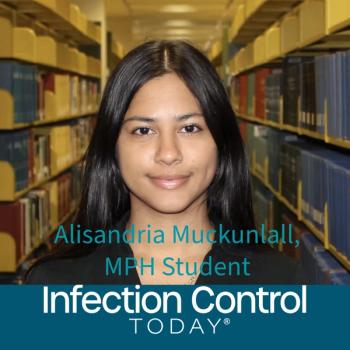Over the last month, volumes of impactful scientific research have been published regarding long-term COVID-19. These findings clearly describe our society's precarious state and the desperate need to change course. We must start controlling our impulses to partake in desirable but risky behavior and instead prioritize controlling the spread of COVID-19.
Most concerning was a large survey by Shijie Quin and colleagues involving over 74,000 participants in China that found the incidence of long-term COVID-19 in their country to be between 10% and 30%. The researchers documented recurrent infections and found that although reinfections were associated with milder disease, they were also associated with “a higher incidence and severity of long COVID.” In addition, they reported that vaccinations reduced long-term symptoms by 30% to 70%. Dr. Ziyad Al-Aly noted that the reported symptoms in this study of brain fog and cognitive decline mirrored other studies from across the world. Long COVID is a worldwide problem that does not involve just one nation or society.
The dangers COVID-19 poses to health care workers were underscored by research from the King’s College of London that found a third of health care workers had symptoms of long COVID. And patients are also not spared. NSW Ministry of Health data reported that in Australian hospitals, thousands of patients have caught COVID-19, and hundreds have died. In the US, we are handling this situation by burying our heads in the sand. We are not counting nor reporting health care-associated COVID-19.
Many of us were hoping that children would be less affected. They would become immune early, and the disease would burn out. These hopes were dashed by a recent NIH study (RECOVER-Pediatrics cohort STUDY) covered by Medscape, which reported that “20% of kids (ages 6-11) and 14% of teens met researchers' threshold for long COVID.”
Unfortunately, there is mounting evidence regarding the role that brain injury plays in long-term COVID-19. The finding by Shijie Quin and colleagues that cognitive dysfunction is a major part of long COVID was also substantiated by Catarina Rua and colleagues in the journal Brain, who documented with imaging studies persistent damage in COVID-19 patients’ brainstems (medulla, pons, and midbrain regions) 93 to 548 days after hospital admission.
In a highly controversial challenge study performed in the United Kingdom, 18 of 34 healthy young adults (aged 18 to 30) volunteers developed COVID-19 after exposure to the virus. One had an asymptomatic infection, and the remaining (17) developed a mild one. Comparing pre-and post-test results with follow-up at 30, 90, 180, 270, and 360 days, the research documented deficiencies in memory and executive function tasks.
Executive function relates to judgment, anger control, and managing emotions and actions. There is mounting research finding that executive function is one of the primary cognitive functions degraded in long COVID. Rosalia-Dacosta-Aguayo and colleagues have reported in 53 subjects with mild to moderate long COVID, 59% had deficits in executive function. Using imaging studies, the researchers documented that the cognitive impairment was “linked” to changes in brain structure. Of the 53 participants, 43 had mild to moderate COVID-19, 9 were treated in the hospital, and none were in the ICU.
Degradation of executive function can have a plethora of societal manifestations. For example, auto insurance is the leading sector experiencing the largest inflation in the US, which rose almost 21% in the 12 months ending in February 2024. Increased claims and traffic deaths have driven this increase. I would assert that this phenomenon is a manifestation of post-COVID deficiencies in executive function, which has caused an increase in risky driving behavior. In December 2022, Infection Control Today® discussed an American Journal of Medicine article that observed a significant increase in traffic accidents in vaccine-hesitant individuals. A 2024 study by the American Automobile Association found that risk driving spiked, as did an associated increase in fatal traffic accidents. A study published this month (October 8, 2024) in Neurology reported a correlation between COVID-19 cases and traffic accidents.
It has been shown that patients who experience disturbances in smell have an increased risk of developing “behavioral, functional, and structural brain alterations.” This virus has a propensity to affect the brain, including the prefrontal cortex. One of the first researchers to describe the propensity of this virus to infect the brain was Fernanda Crunfli, PhD, and colleagues, who observed infection of astrocytes. This was a surprising finding since brain cells (astrocytes) do not have ACE2 receptors. Thus, the researchers postulated a second method of cellular entry. This postulate was confirmed by researchers from the University of Illinois and Northwestern University, who observed that while infecting the lungs, the virus can mutate, losing its furan cleavage site, which enhances its ability to infect the central nervous system.
Thus, a picture is starting to form of an insidious, dangerous pathogen that, upon infection, can change the host's behavior to manifest risky behavior, increasing the spread of the SARS-CoV-2 virus and repeating the cycle. Acquiring such an ability is an example of evolutionary pressure to enhance the virus's survival.
All the above is depressing but also largely preventable. Chinese philosopher Lao Tzu stated that if you do not change directions, you may end up where you are headed. We must prioritize vaccinations, use N95 masks, and clean indoor air to stop this virus's spread. Only then will we be headed in the correct direction.







